Contamination
Human activity has contrìbuted to the alteration of the majority of the earth’s surface. This type of rapid expansion and control over the planet has a striking similarity with bacterial contaminations.
Humans coalesce into dense population centres like bacterial colonies in order to have a more efficient social system, and when the conditions are right they prolìferrate leaving a mark on the surface.
I use a special bacteria called Serratia marcescens an opportunistic pathogen that in specific conditions produces a strong red pigment called Prodigiosin. The name is extraordinary, miraculous. This pigment is being studied for its antibiotic and anticancer biological activities.
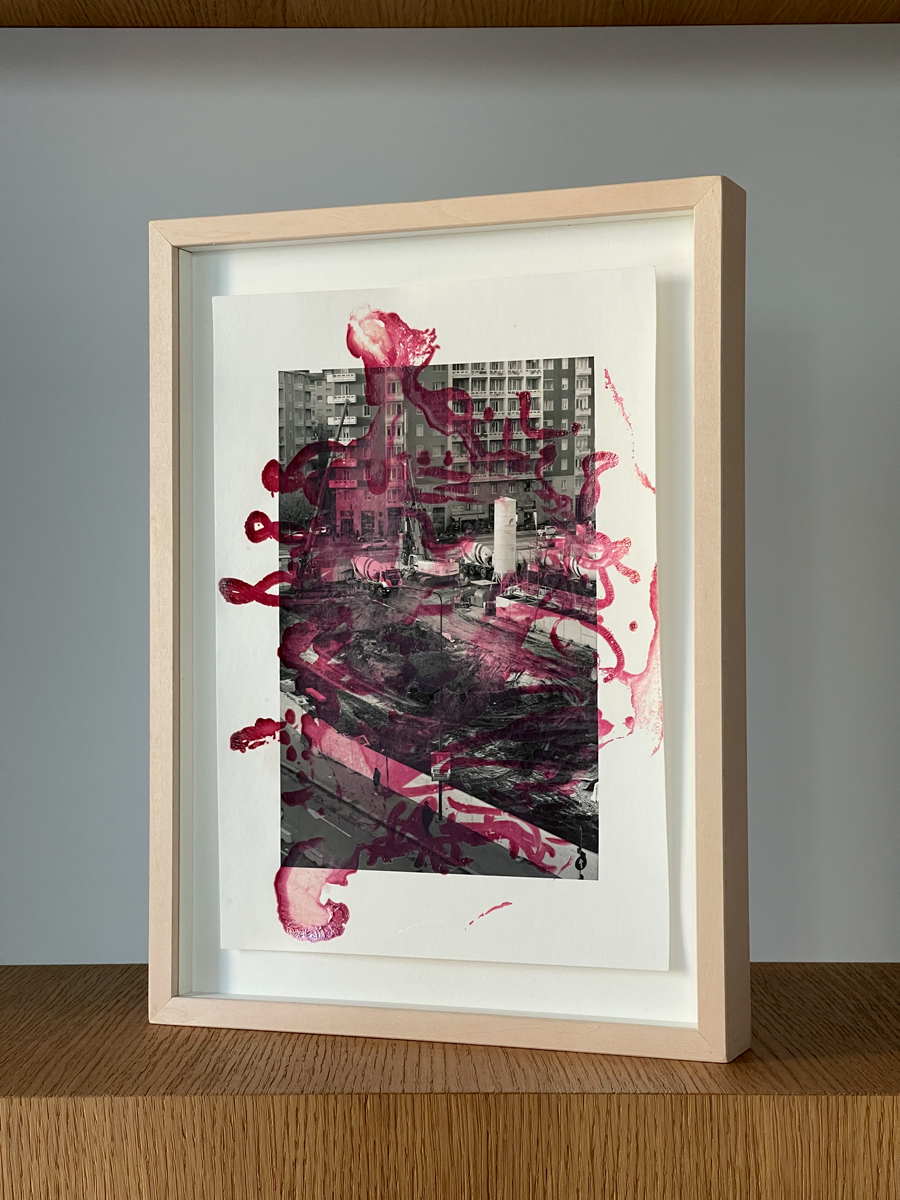
Serratia contamination 01
21x30cm – Hahnemuhle bamboo paper
Unique piece
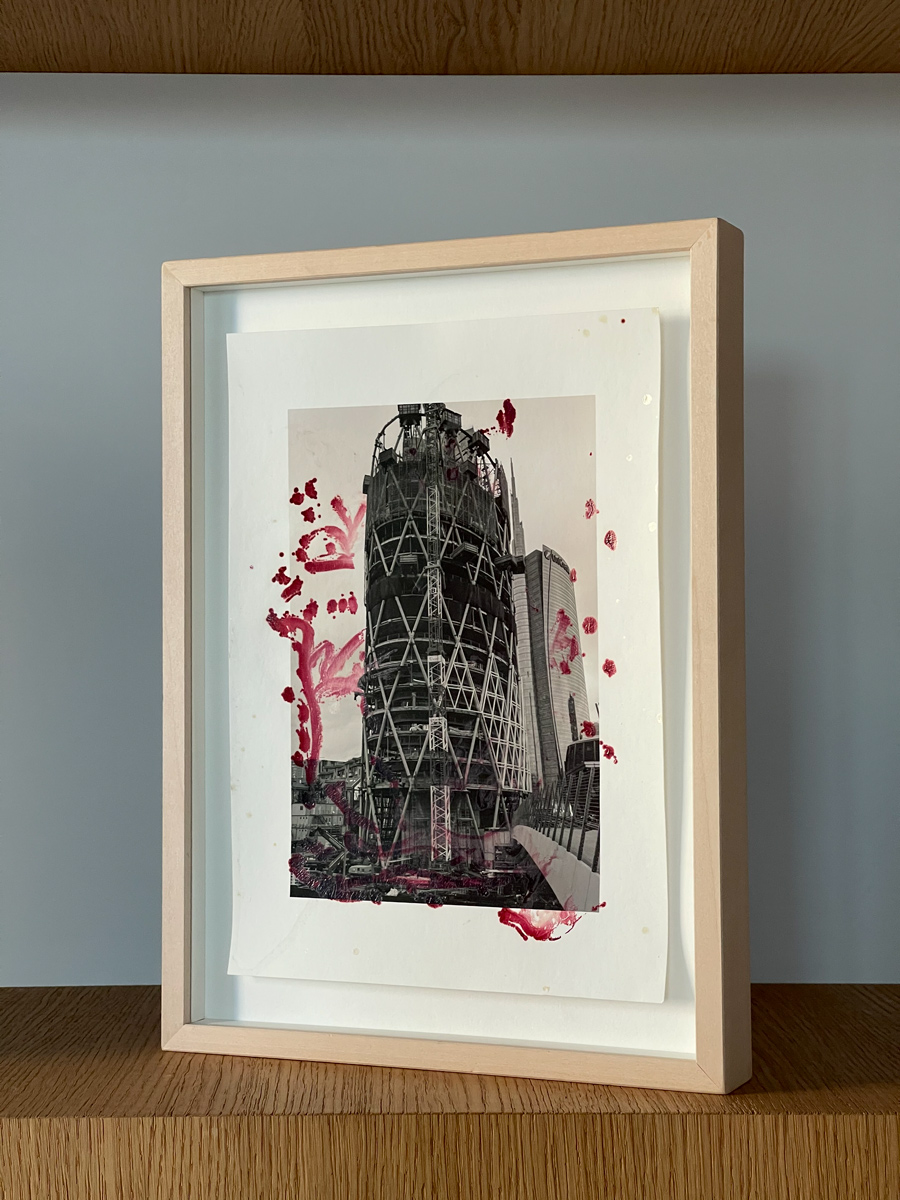
Serratia contamination 02
21x30cm – Hahnemuhle bamboo paper
Unique piece
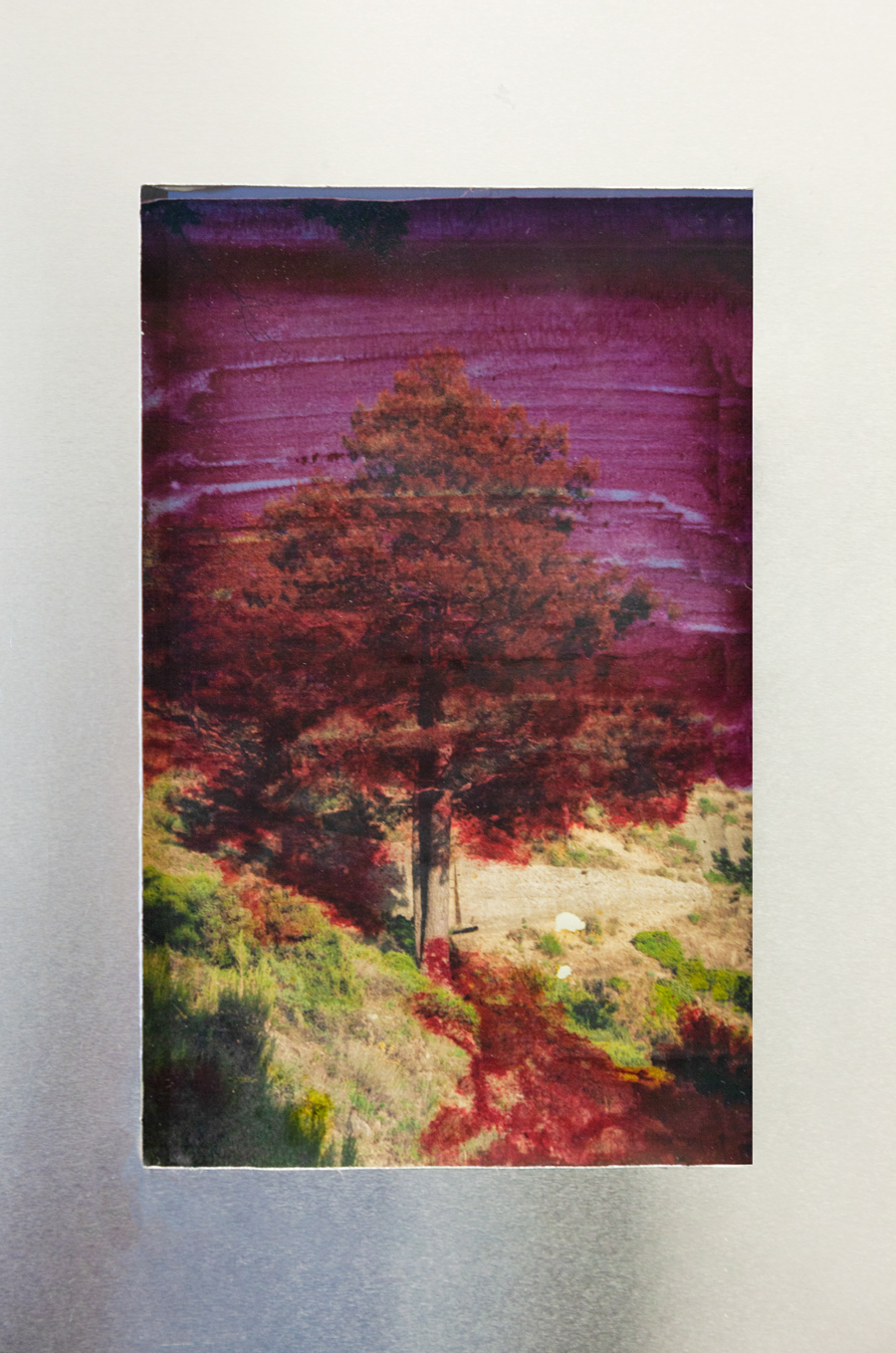
Sila national park 03
11x16cm – Hahnemuhle bamboo paper
Unique piece
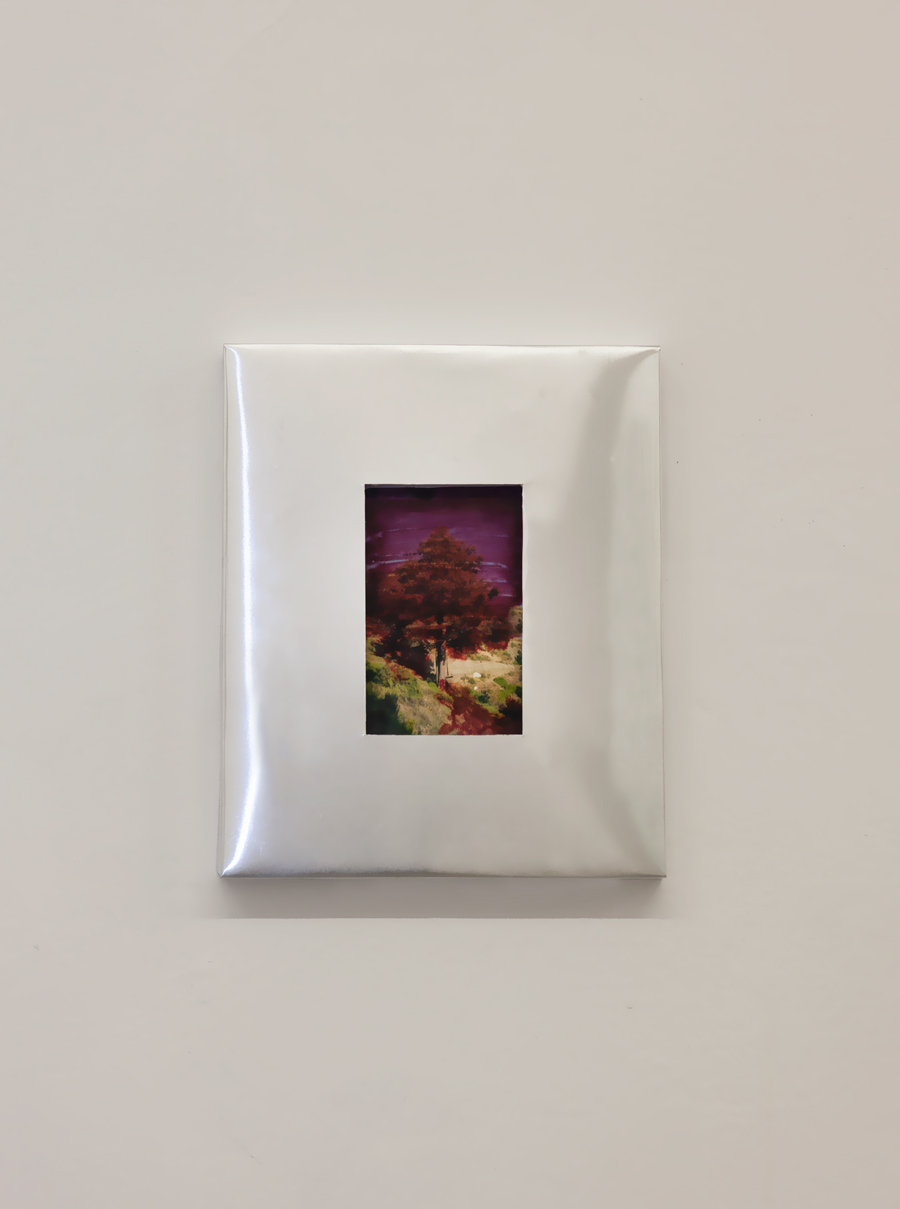
Sila national park 03
11x16cm – Hahnemuhle bamboo paper
Unique piece
I use the bacteria to contaminate printed photos taken by me in places where a process of alteration of the landscape is taking place.
The prints are then sterilised and the trace of the red pigment remains on top of the paper, altering the landscape of the image and leaving a mark of the bacterial contamination.
This bacterium mostly grows on several surfaces like bread or ceramic, and it’s also suggested that it could be found on damp Italian statues, creating the stories of Mary crying blood.

Many historical events of transubstantiation (in the Catholic Church when bread and wine used in the sacrament of the Eucharist actually become the body and blood of Christ) are been attributed to the growth of this bacterium and the production of its characteristic red pigment. In a particular episode of 1264, a priest from Bolsena, in Italy, was celebrating mass when blood apparently appeared on the bread of the communion and dripped onto his robe.
This was probably the first time that S. marcescens has directly influenced the arts since the great master painter Raffaello commemorated this apparent miracle in his “La Messa di Bolsena”.
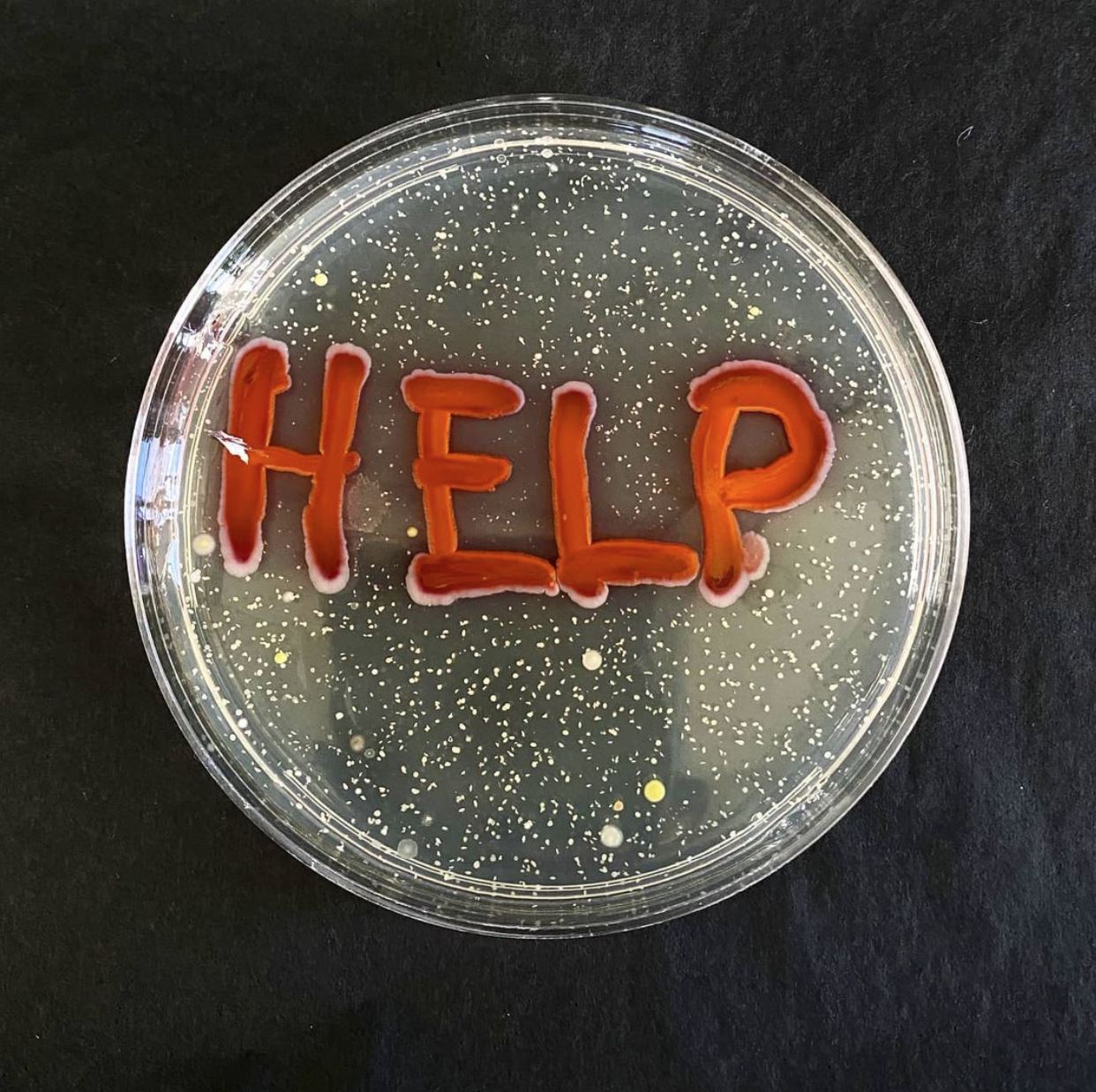
“Help” contamination on petri dish using Serratia marcescens bacteria, 2021

